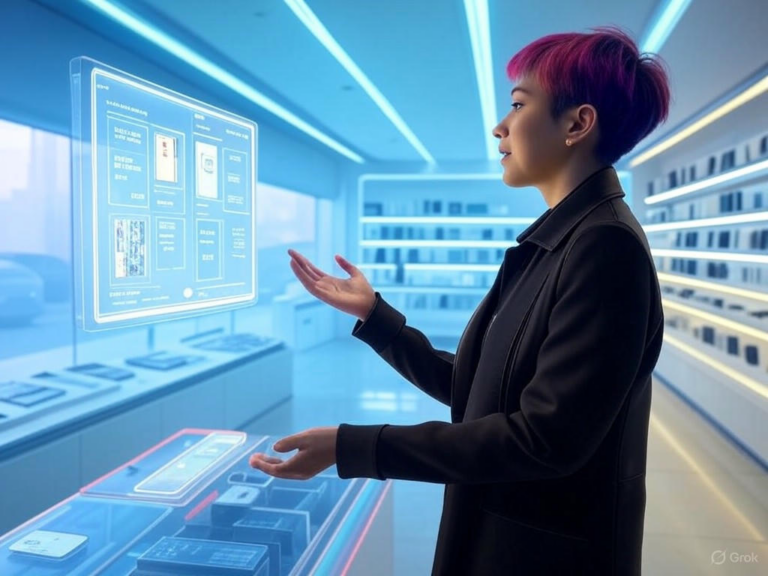
Microsoft Recall Feature Rolls Out to Copilot+ PCs
Microsoft Recall: AI’s New Memory Boost for Copilot+ PCs
Microsoft Recall is finally here, bringing a wave of excitement to Copilot+ PC owners after months of anticipation and refinements. Originally unveiled in May 2024, this feature is now rolling out as a free update, compatible with Intel, AMD, or Qualcomm-powered devices. Have you ever lost track of a file or idea on your computer? Microsoft Recall aims to change that by using AI to make your digital history searchable in an instant.
At its core, Microsoft Recall captures snapshots of your screen at set intervals, turning them into a smart, searchable archive. This means you can hunt down anything from old emails to forgotten web pages without digging through folders. It’s a game-changer for productivity, especially if you’re juggling multiple tasks daily.
What Is Microsoft Recall?
Microsoft Recall is an innovative tool that leverages AI to record and index your PC’s activities, making it easier than ever to retrieve past content. By taking periodic screenshots and applying optical character recognition (OCR), it builds a local database of your digital interactions. Imagine describing a document you vaguely remember—Microsoft Recall can pull it up based on your natural language query.
For instance, if you’re working on a project and can’t find that financial PowerPoint, just type a quick description, and the feature does the rest. It runs on the Windows Copilot Runtime, keeping everything organized and accessible through a simple timeline or search bar. Once you spot what you need, a single click relaunches it, saving you precious time.
Key Features of Microsoft Recall
- Seamless AI-driven searches with everyday language
- A timeline view to scroll through your history
- One-click access to reopen content
- All processing happens locally, with no data leaving your device
- Options to customize what gets recorded for better privacy
- Secure, encrypted storage to protect your information
These features make Microsoft Recall a standout addition to Copilot+ PCs, blending convenience with smart technology. If you’re someone who often thinks, “Where did I see that?” this could be your new best friend.
Addressing Privacy and Security in Microsoft Recall
When Microsoft first introduced Recall, it faced backlash over potential privacy risks, like capturing sensitive data such as passwords. Fast forward, and the company has made significant upgrades to ease those concerns. Now, Microsoft Recall is designed with user control at the forefront, ensuring your data stays secure.
Key improvements include opting in during setup, where choices are presented equally to avoid any bias. All snapshots are stored encrypted on your device, meaning they’re never uploaded to the cloud. Plus, you’ll need biometric authentication, like a fingerprint or facial recognition, to access anything in Microsoft Recall.
Opt-In and Custom Controls
One of the biggest changes is that Microsoft Recall is entirely optional, giving you the power to decide from the start. You can exclude specific apps or websites, tailoring the feature to your needs without capturing everything. This level of customization is a direct response to user feedback, making it feel less intrusive.
For example, if you handle confidential work, you might block certain programs to keep things private. Microsoft has even enhanced its AI to automatically skip sensitive info, like login credentials, adding another layer of protection.
The “Click to Do” Companion Feature
Alongside Microsoft Recall, there’s a handy addition called “Click to Do,” which uses AI to turn discoveries into actions. Powered by the local Phi Silica model on Copilot+ PCs, it builds on what Microsoft Recall finds. Say you spot a video with a cool outfit—Click to Do could suggest searching Bing for similar items to buy.
This feature isn’t just about shopping; it can summarize text or refine ideas with a quick click, boosting your workflow. Developers can integrate it into apps via a simple URI scheme, opening up even more possibilities. It’s like having a personal assistant right in your PC, making Microsoft Recall even more versatile.
Getting Started with Microsoft Recall on Your PC
Microsoft Recall is exclusive to Copilot+ PCs running Windows 11, specifically those with Neural Processing Units (NPUs) for efficient AI handling. It’s part of the latest update, Windows 11 Build 26100, via the KB5055627 patch. If you own a compatible device, check for updates to get started—it’s that straightforward.
To use it, open the app from your Start menu, authenticate with Windows Hello, and start searching or browsing. You can manage storage settings, delete snapshots, or adjust filters as needed. Have you updated your PC lately? This might be the feature you’ve been waiting for.
Step-by-Step Guide to Microsoft Recall
- Launch the Microsoft Recall app from the Start menu
- Verify your identity with a PIN, face scan, or fingerprint
- Enter a natural language search or explore the timeline
- Select a snapshot for details and relaunch the original content
- Tweak settings to control storage and exclusions
This process is intuitive, designed for everyday users. If you’re new to AI features, Microsoft Recall offers a gentle introduction without overwhelming complexity.
Industry Buzz Around Microsoft Recall
The launch of Microsoft Recall has stirred conversations in the tech world, especially after its delay impacted Microsoft’s AI PC push. Initially, Copilot+ PCs highlighted hardware perks, but now, with Microsoft Recall on board, the focus shifts back to AI’s potential. It’s a reminder of how companies like Microsoft and Apple are racing to make AI integral to our devices.
Reactions are split—some praise the productivity gains, while others worry about privacy. A report from BleepingComputer notes that users are cautiously optimistic, weighing the benefits against risks. What do you think—could this be the future of computing?
Looking Ahead with Microsoft Recall and AI on Windows
Microsoft sees Microsoft Recall as a stepping stone for more AI integrations in Windows, building on the lessons learned from its rollout. Despite the setbacks, these enhancements will likely influence upcoming features, making AI more seamless and secure. It’s exciting to imagine how this could evolve, perhaps with even smarter search capabilities.
For now, Microsoft Recall showcases what’s possible when AI meets everyday tasks, like finding a lost note or summarizing a meeting. As AI becomes more embedded in our lives, features like this could redefine how we interact with our PCs.
Is Microsoft Recall Right for You?
Deciding on Microsoft Recall boils down to your comfort with AI and privacy. If you often misplace digital items, it could save hours; but if you’re handling sensitive data, you might want to pass. Here’s a quick breakdown to help.
Pros of Enabling Microsoft Recall
- Quickly locate forgotten files or web pages
- Enhance productivity with AI-assisted searches
- Easily revisit past work without hassle
- Streamline your digital workflow
Cons and Cautions
- Potential privacy risks with screen monitoring
- Extra background processes that might slow your PC
- Storage demands for saving snapshots
- Need for careful configuration to protect data
Actionable tip: If you try it, start by excluding sensitive apps and review your settings regularly. That way, you get the best of both worlds.
Wrapping Up on Microsoft Recall
Microsoft Recall marks a bold step in AI-enhanced computing, finally delivering on its promise for Copilot+ PCs. With strong privacy measures in place, it’s poised to make your PC experience more intuitive and efficient. Whether you’re diving in or staying cautious, this feature highlights how AI can transform our daily routines.
As you consider enabling it, think about how it fits into your workflow—could it make your life easier? We’d love to hear your thoughts in the comments below. Share this post with fellow tech enthusiasts or check out our other articles on Windows innovations for more insights.
References
1. Microsoft Learn. “Recall API Documentation.” https://learn.microsoft.com/en-us/windows/ai/apis/recall
2. DoublePulsar. “Testing Security Implications of Microsoft Recall.” https://doublepulsar.com/microsoft-recall-on-copilot-pc-testing-the-security-and-privacy-implications-ddb296093b6c
3. Axios. “Microsoft’s Recall AI Feature Rolls Out.” https://www.axios.com/2025/04/25/microsoft-recall-ai-pc
4. BleepingComputer. “Windows 11’s Recall AI Now Rolling Out.” https://www.bleepingcomputer.com/news/microsoft/windows-11s-recall-ai-is-now-rolling-out-on-copilot-plus-pcs/
5. Windows Central. “Recall’s General Availability in 2025.” https://www.windowscentral.com/software-apps/windows-11/windows-recall-general-availability-2025-copilot
6. YouTube Video. “Microsoft Recall Overview.” https://www.youtube.com/watch?v=XvGUfg1IjjQ
7. CGA Connecticut. “Related Policy Document.” https://www.cga.ct.gov/2024/gldata/TMY/2024SB-00002-R000229-Bastian,%20Kenneth–TMY.PDF
8. YouTube Video. “Additional Recall Insights.” https://www.youtube.com/watch?v=9d75cGN5YEY
Microsoft Recall, Copilot+ PCs, Windows 11 AI features, AI-powered search, screen snapshots, privacy enhancements, Microsoft AI tools, PC activity tracking, Windows updates, AI security measures







